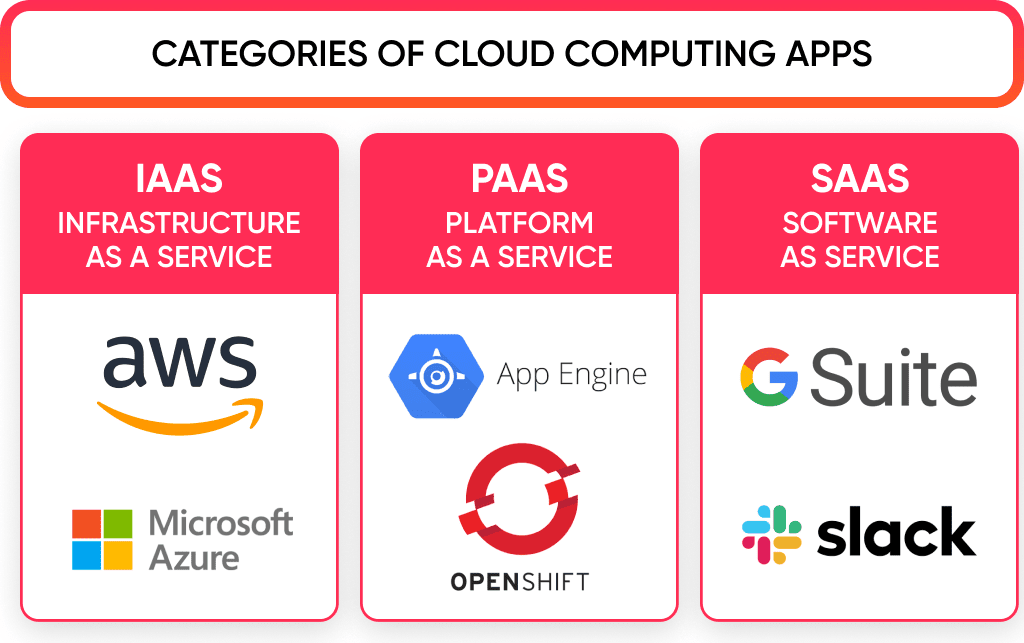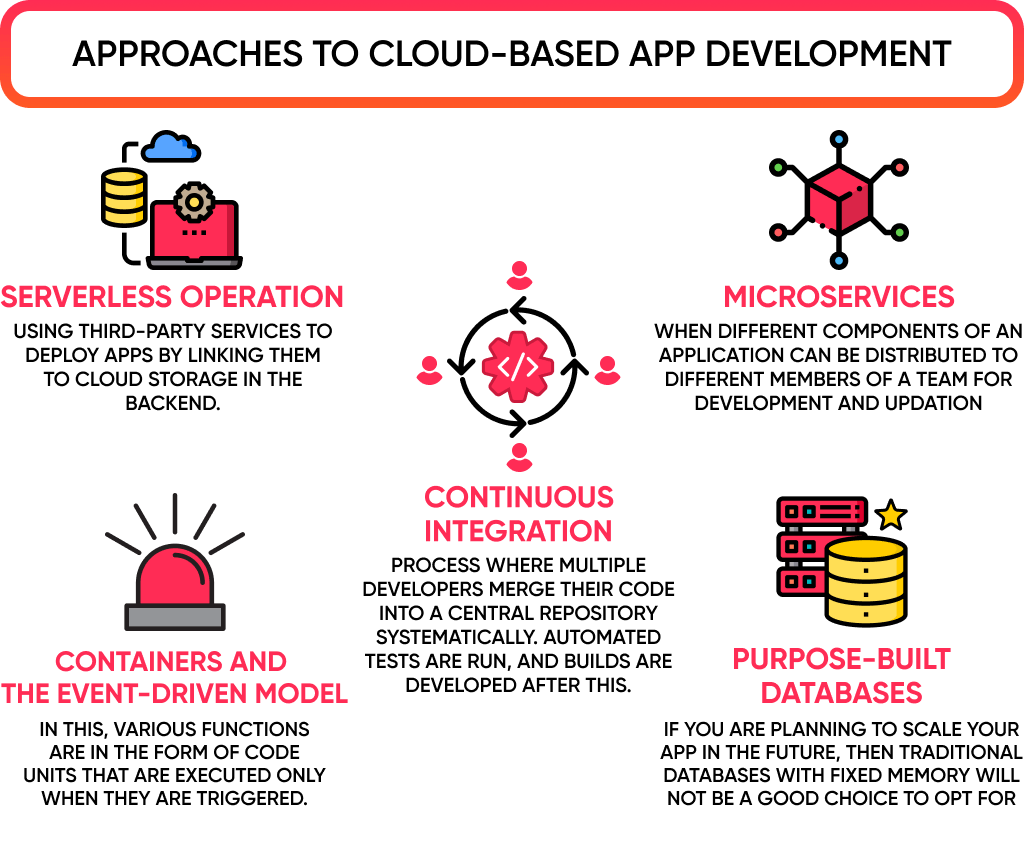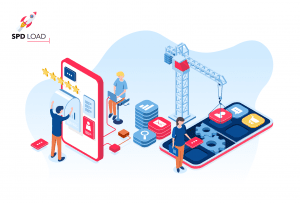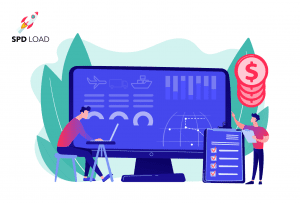Cloud-Based Application Development: Ultimate Guide
- Updated: Nov 11, 2024
- 12 min
Technology is advancing at an incredible rate in the 21st century, and we all need to keep up.
Especially for business owners – the competition is fierce out there. With innovations like cloud-based app development, AI, machine learning, AR, and more, the standards for companies have skyrocketed.
To deliver superior customer experiences, firms are leveraging various ingenious technologies. One that has taken the business world by storm is cloud computing and cloud-based applications.
Get a load of these stats:
- The global cloud computing market is expected to grow to 1,266.4 billion by 2028.
- With a compound annual growth rate of 17.5%, analysts project the market will hit $832.1 billion by the end of 2025.
With cloud-based app development booming right now, businesses must integrate this tech.
Whether you’re an ambitious startup or a well-established company looking to dive into cloud computing, this article is for you.
Read on to discover how you can develop a killer cloud-based application.
It outsourcing can streamline your app development. Here’s a complete guide on finding the right mobile app developers.
Transform your idea into reality with our cloud-based app development services — contact us today!
Cloud-Based App Development Types
Now, the scope of Cloud-based applications is not limited to one type.
There are multiple categories of Cloud Computing apps.
Let us take a brief look at those categories and understand them better with their respective examples:
| Type of App Development | Description and Examples |
| IAAS (Infrastructure as a service) | You must have heard of Amazon Web Services, right! Well, if you haven’t, the AWS set of tools is the perfect example of IAAS. The thing that makes IAAS one of the best for Cloud-based apps is the infrastructure. In this model, the entire complex infrastructure like servers, networks, visualization, hardware, storage, and whatnot is provided by a service provider like AWS. Compare Digital Ocean, AWS, and Google Cloud for insights into which platform fits your business best. On the other hand, being a client, you just have to create an API to access all those services. This way of developing an app reduces the hassle of creating the entire Cloud-based app development infrastructure. Hence, you don’t have to start from scratch to develop an app. Some of the best examples of this are:
|
| PAAS (Platform as a Service) | This model reduces the work of a client more as compared to that of IAAS. In this model, the service provider offers the client everything from:
Now, for Cloud-based mobile app development based on this model, you just need to have the code of the app you want to develop. This highly decreases the time required to build the app and to hit the market. The development tools provided by the providers of this model are regularly updated. Moreover, if you want to make changes to your app, you can seamlessly do it. The service providers that come under this Cloud-based app development model are:
|
| SAAS (Software as Service) | Well, if you have worked with Google Docs or Drive, then you must know that it is based on the SAAS model. The SaaS product Cloud-based model is the most popular type of app development model. It has been widely used by millions of people and businesses around the world. For instance, Google Drive, developed using advanced ‘cloud programming languages‘, has crossed 1 billion users in 2020. The sole reason behind this whopping number is the ease of usage and availability on almost all devices, whether it is a phone, laptop, or tablet. The SaaS based apps do not run on the user’s phone or device but on third-party hardware. Moreover, the software for this model is also remotely hosted. This saves a lot of money for the customers as they do not have to update the app or buy any specific hardware. The best examples of this model are:
|
If you are planning the development of a Cloud-based application, you can look into any of these models.
As SAAS is the most commonly used model around the world, it will be best to undertake the development via this model.
If you’re entering the SaaS world, these best SaaS startup ideas are worth exploring. 
Why Cloud-Based App Development is Special
All these ways of Cloud-based Mobile App Development may seem easy, but there are many challenges that you need to consider beforehand.
Whether you are developing a Cloud-based mobile app or becoming a provider of these services, it is essential to analyze the following factors:
| Challenges | Description |
| Security | Your account has been accessed from an unknown location!!! This message is powerful enough to mess with anyone’s mind in an instant. Now, most of these messages occur due to security issues or by the customer’s end. Customer error is not in your control, but the security of the app is. As your Cloud-based app will have to store a lot of data along with sensitive information of the users. It becomes essential to make security the number one concern in the Cloud-based Mobile App Development process. For this, you need to employ all the latest methods of security, as data encryption and firewalls. As there are countless APIs linked to a Cloud-based application, it is necessary to shield them from cyber attacks. Consider using both symmetric and asymmetric methods of data encryption like:
In the development of a Cloud-based mobile app, the security of data is a big challenge. Hence, take care of it! |
| Performance | One aspect that you need to pay close attention to in the development process of Cloud-based applications is the performance of the suite. If you want to develop an app that provides an awesome customer experience, it is necessary to choose the best Cloud-based service provider. Before opting for one, check if the providers of resources have multiple servers around the world. Cloud service providers like AWS, Google, and Microsoft have servers all around the world. This highly reduces the time of access (the loading time of the pages (<= 3 seconds) is reduced to a great extent). This happens irrespective of the location of the user. Hence, enhancing performance. Moreover, it will be best if the cloud service provider has a CDN (content delivery network). It speeds up the content delivery process. |
| Scalability | In order to get the best profit from your Cloud-based app development program, it is necessary to choose a partner that has the facility of scalability. Picking the right partner is crucial — here’s how to choose an app development company that fits your needs. Now, it is pretty obvious that the user base of your app will increase, for which you need to upgrade your infrastructure. But, timing plays a great role when you are scaling. Around 30% of startups will fail by the end of year 2. About the scaling of the firm, do check if the platform offers the feature of scalability. If the users of your app are more than that a server can handle, it will become tough to manage. Your app can even fall in that case. Scalability helps in managing the increasing users on a daily basis and thus, enhancing user experience. |
| Reliability | What if the Cloud-based mobile application development service does not have the feature of data backup? Well, that would be scary as well as inconvenient. You will never be sure of working with that tool, right? Hence, it is necessary to check if the solution has all the necessary features, and work properly. If not, never go for that, too,l as it will slow down your Cloud-based mobile app development process. Also, check for additional features that can add convenience to your overall process. |
Cloud-Based App Development Approaches to Consider
Keeping up with the latest application development trends has become essential for every business today. Why? Well, the 21st century has been a rollercoaster so far. Every day there are fresh developments in technology, whether it is in the food delivery sector or IT sector.
Just like this, companies that have migrated from primitive to Cloud-based application development have witnessed a plethora of benefits. Some of them are:
- Less time is required for the product to hit the market.
- Enhanced performance
- Flexibility of scaling
And many others!
But is that enough??
To be honest, it is not!! We see that with the surfacing of technologies like AI, ML, AR, both mobile and computer devices are changing. Their way of functioning, data usage, user interfaces, and others are evolving.
Thus, making it necessary to change the approach with which we carry the Cloud-based mobile app development.
So, as we go on to approaches, let us take a look at the various new approaches that you can use for the development of a Cloud-based application.
Unleash AWS's Full Potential with Our Developers.
| Approach | Description |
| Adoption of Microservices Approach | What is the Microservices approach? Well, when different components of an application can be distributed to different members of a team for development and updation, that is what microservices offer. This is a great approach that can be taken up for the development process of a Cloud-based app. Why? Well, there are multiple benefits to this, such as:
|
| Serverless Operation Approach | So, this may seem impossible, but as per the SAAS development model for a Cloud-based mobile app, it can be done. Using third-party services, firms can deploy apps by linking them to cloud storage in the backend. If not this, then you can use the cloud computing platform itself to run the application code. Alternatively, if you are looking for the right server load balancing solution for high availability, Kemp Technologies LoadMasters would be a perfect choice. By leveraging these ways of Cloud-based app deployment and development, you can foster a plethora of benefits from the Serverless Operation Approach like:
|
| Containers and the Event-Driven Model | Just like the microservices and serverless approach, the event-driven approach, along with containers, is also popular due to its unique utility. In this, various functions are in the form of code units that are executed only when they are triggered. The running of these codes based on the events makes this approach provide scalability and flexibility. The scalability, in this case, takes less time and cost. |
| Purpose-built databases | The Cloud-based mobile app development process can vary based on the type of app. How? Well, as there are a plethora of Cloud-based app choices. The size & other requirements of each app is different. Thus, they all need different sets of resources. One of those resources is the database. If you are planning to scale your app in the future, then traditional databases with fixed memory will not be a good choice to opt for. Hence, it is best that you choose the database that can handle the future demands of the app. Not to forget, it should be scalable. For this, you need to analyze the aspects and purpose of the app, along with the offerings in the market. When you have enough data about these factors, then only you can make the best choice. For example, Netflix is a video streaming app that requires large databases for storing video content. The streaming market is booming. Discover how to start a streaming service like Netflix and claim your space. |
| CICD (Continuous Integration and Continuous Delivery) Approach | As long as you don’t have automation in the Cloud-based app development process, there is no way you can save time. Irrespective of what resources you have, an automated deployment process is necessary to reduce manual effort. CICD expanded as a Continuous Integration, and Continuous Delivery approach is used to enable automation in the Cloud-based application development process. Continuous integration is a process where multiple developers merge their code into a central repository systematically. Automated tests are run, and builds are developed after this. On the other hand, Continuous Delivery deals with the release of the build codes to production. CD starts where CI ends after sending the codes to the testing phase. CI/CD ensures that all the code changes are considered and tested well before deployment. All of this is totally automated. It is best to couple with a serverless, containers based approach. |
To undertake a smooth as well as an effective Cloud-based mobile app development process, it is best to follow the described approaches.
They will not only reduce time to market but will also assist in future modifications related to the cloud app. 
How Much Does It Cost to Develop a Cloud-Based Mobile App
If you are looking for a perfect number, that is a bit difficult to tell.
As there are a number of aspects that make up an app, they all play a role in deciding the final cost of the app in one way or the other.
Here are some factors that decide the overall cost of a Cloud-based app development process:
| Factor | Description |
| Complexity | As your Cloud-based app will be a global app, it is obvious that it will have multiple features. And the presence of multiple features will decide the overall cost of it. The cost estimation is part of the initial project discovery phase. Here are some app examples based on their complexity:
The price factor increases from Simple apps > Database and API apps > Large scale apps. |
| Required Team | Another factor that affects the cost of Cloud-based application development is the required team. Based on the type of app you are designing, the technologies may vary. There can be many technologies that might be needed to develop an app, such as Xamarin, React Native, Flutter, Ionic, etc. Now, one person may not know all of this. Hence, you will also need other people like designers, testers, marketers, R&D, etc. In short, the size of the team will increase the cost, and the size of the team is also somehow dependent on the complexity of the app. |
| Location and type of cooperation | The last factor that will affect the cost of development of a Cloud-based application is the location and the type of cooperation. The prices of development are different all around the world. Moreover, different people charge differently for app development. For example, if you hire a freelancer, you can get an MVP made in and around $12,000 – $20,000. If you hire an in-house team, the cost of an MVP development of a Cloud-based app will be $30,000 – $50,000. It will cost you about $70,000 – $120,000 from a local agency. In contrast, the price of a Cloud-based app MVP will be $40,000+ from an outsourcing agency. Other than these, there are many other costs like maintenance cost, sales cost, marketing, and advertising, etc. These can add some extra numbers to the above-mentioned figures. All these prices can vary based on the location but will be near to these ranges. |
Want to Build a Custom Cloud-Based Application?
Want to develop your own cloud-based app off the ground?
With multiple development options, your best bet is often outsourcing to an overseas agency if in-house production is too costly. Check out the best countries to outsource software development for top choices.
You might think about hiring a freelancer, but that can be risky for ensuring the effectiveness of a complex app.
The benefits of choosing an overseas dev agency include getting timely updates, cost-effective development, and access to a professional team.
Optimize Your Development Lifecycle with DevOps Experts.
We offer all of that and more at Spdload. Our extensive expertise covers:
- SaaS and cloud-based app development
- Mobile app development
- Marketplace development
- Web development
Our skilled team handles every step of the process – discovery, idea validation, market research, and competitor analysis. We also pay great attention to the role of MVP in software development, design, testing, launch, and post-release services.
Here’s a stellar example of a cloud-based mobile app we built – MyWishApp:
- Per the client’s initial request, we developed a complex, scalable MVP
- The MVP had three roles – user, partner, administrator
- Building the sharing module posed challenges, but we got it done, ensuring scalability
- We added syncing contacts, advanced push notifications, a slick UI, and product recommendations
- The entire cloud app dev process took ~2,050 hours. The website took 350 hours, and the admin panel 600 hours.
Ready to start building your own cloud-based app? Let’s talk!









